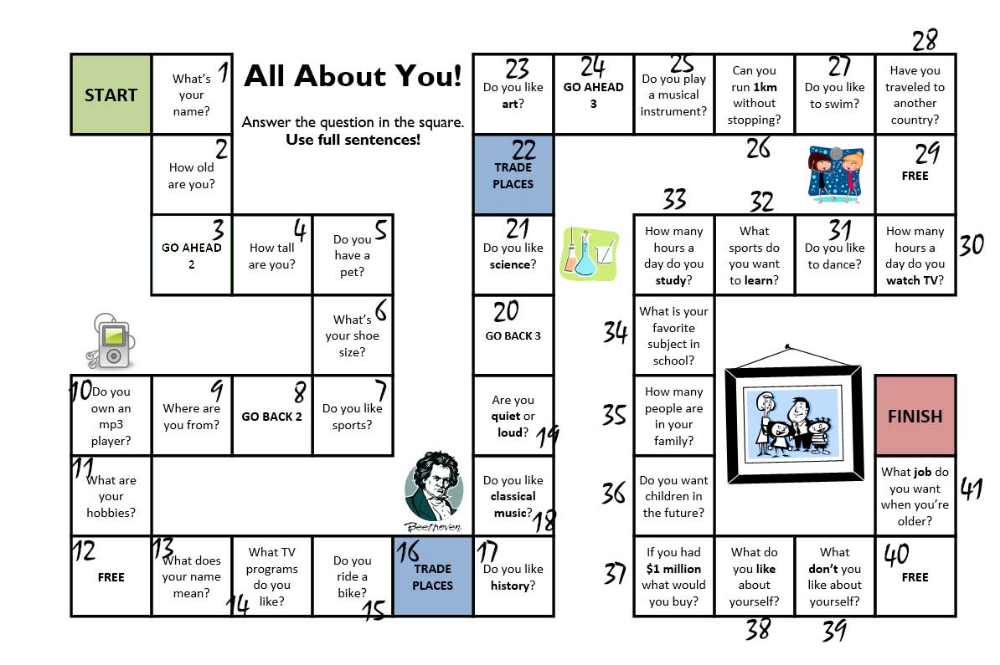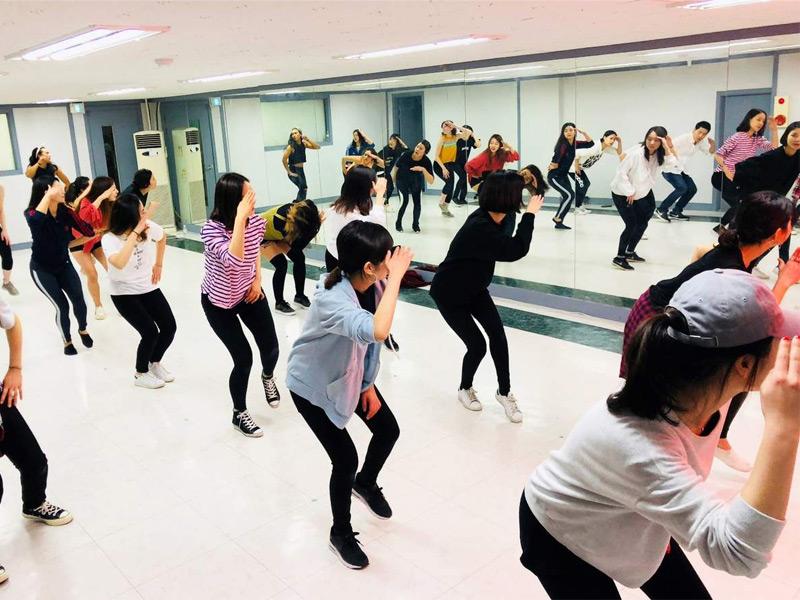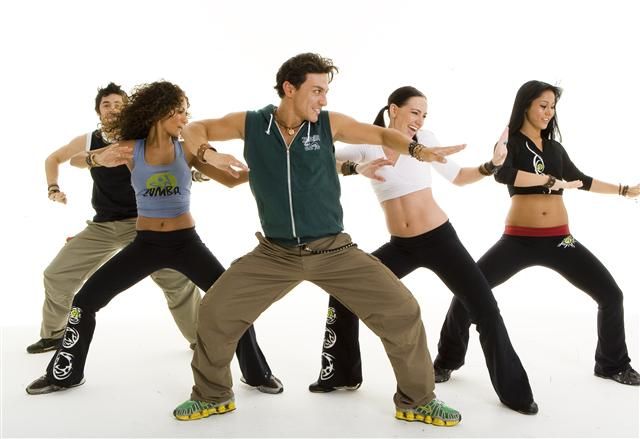How to play dancing days
Dancing Days by Led Zeppelin Chords, Melody, and Music Theory Analysis
Communication Breakdown by Led Zeppelin |
Fool in the Rain by Led Zeppelin |
Kashmir by Led Zeppelin |
Stairway to Heaven by Led Zeppelin |
Tangerine by Led Zeppelin |
Ten Years Gone by Led Zeppelin |
Thank You by Led Zeppelin |
Suggestions
All Along The Watchtower by Jimi Hendrix |
Angel by Jimi Hendrix |
Animate by Rush |
Armenia City In The Sky by The Who |
Baba O'Riley by The Who |
Bad Moon Rising by Creedence Clearwater Revival |
Behind Blue Eyes by The Who |
Black Hole Sun by Soundgarden |
Blow Up The Outside World by Soundgarden |
Bold As Love by Jimi Hendrix |
Boot Camp by Soundgarden |
Born On The Bayou by Creedence Clearwater Revival |
Breaking The Law by Judas Priest |
Burden In My Hand by Soundgarden |
By-Tor And The Snow Dog by Rush |
Castles Made of Sand by Jimi Hendrix |
Close To The Edge by Yes |
Closer to the Heart by Rush |
Down On The Corner by Creedence Clearwater Revival |
Fell On Black Days by Soundgarden |
Fly By Night by Rush |
Fortunate Son by Creedence Clearwater Revival |
Free Bird by Lynyrd Skynyrd |
Freewill by Rush |
Gimme All Your Lovin by ZZ Top |
Gimme All Your Lovin' by ZZ Top |
God Is Dead by Black Sabbath |
Have You Ever Seen the Rain by Creedence Clearwater Revival |
Headlong Flight by Rush |
Heart of the Sunrise by Yes |
Heaven and Hell by Black Sabbath |
Hello Mary Lou by Creedence Clearwater Revival |
Hey Joe by Jimi Hendrix |
Highway Star by Deep Purple |
I Can See For Miles by The Who |
I Can't Explain by The Who |
I've Seen All Good People by Yes |
Iron Man by Black Sabbath |
Jump by Van Halen |
Let Me Drown by Soundgarden |
Limelight by Rush |
Little Wing by Jimi Hendrix |
Long Distance Runaround by Yes |
Lookin' Out My Back Door by Creedence Clearwater Revival |
my mom made pancakes by Yes |
My Wave by Soundgarden |
One Rainy Wish by Jimi Hendrix |
Owner Of A Lonely Heart by Yes |
Painkiller by Judas Priest |
Paranoid by Black Sabbath |
Pinball Wizard by The Who |
Pretty Noose by Soundgarden |
Proud Mary by Creedence Clearwater Revival |
Purple Haze by Jimi Hendrix |
Quadrophenia by The Who |
Red Barchetta by Rush |
Right Now by Van Halen |
Roundabout by Yes |
Run through the Jungle by Creedence Clearwater Revival |
Simple Man by Lynyrd Skynyrd |
Smoke on the Water by Deep Purple |
Soldier Of Fortune by Deep Purple |
Starship Trooper by Yes |
Subdivisions by Rush |
Sunrise by The Who |
Sweet Home Alabama by Lynyrd Skynyrd |
Symptom of the Universe by Black Sabbath |
The Camera Eye by Rush |
The Day I Tried To Live by Soundgarden |
The Revealing Science of God by Yes |
The Rose by Janis Joplin |
The Seeker by The Who |
The Song Is Over by The Who |
The Spirit of Radio by Rush |
Tom Sawyer by Rush |
Tuesday's Gone by Lynyrd Skynyrd |
Up Around the Bend by Creedence Clearwater Revival |
War Pigs by Black Sabbath |
White Room by Cream |
Who Are You by The Who |
Won't Get Fooled Again by The Who |
Working Man by Rush |
World of Pain by Cream |
YYZ by Rush |
Recently Added
Red Baron (Of Arizona) by Bryan Scary |
Red Baron (Of Arizona) by Bryan Scary |
The Child You Were by Frances Aravel |
Golbez - Clad In Darkness by Nobuo Uematsu |
Vuelvo by Beto Cuevas |
This Bright Flash by M83 |
Another Ace in the Hole by Bryan Scary |
On the Sea by Beach House |
Nothing In This World by Paris Hilton |
Major Tom - Voellig Losgeloest by Peter Schilling |
It's My Life by Bon Jovi |
Baby I by Ariana Grande |
Good Stuff by Kelis |
Badz Duzy by Natalia Nykiel |
Savage Love by Jason Derulo |
International Love by Pitbull (ft Chris Brown) |
Faintless Moody Outlaw by Bryan Scary |
Komaki-Nagakute - Samurai Warriors 2 by Koei |
The Roof (Back In Time) by Mariah Carey |
I'll Do Anything by Ginuwine |
Perfect Day ft No Doubt by Kelis |
Be Near Me by ABC |
I Bet by Ciara |
Final Warning ft Aaliyah by Ginuwine |
Little Brown Jug by Joseph Eastburn Winner |
The Tale of Opal Dawn by Bryan Scary |
The Warrior by Scandal featuring Patty Smyth |
No Turning Back by JJ Lin |
only you by Waa Wei |
Superior - Dynasty Warriors 3 by Koei |
The Magic Key by One-T |
Great Voyage by KaS |
Dance of the Evanescent by Keiichi Okabe |
Midnight At The Oasis by Maria Muldaur |
Dancing Days by Led Zeppelin
License This Song
lyrics
artistfacts
Songfacts®:
This was inspired by an Indian tune Jimmy Page and Robert Plant heard while traveling in Bombay. When they returned home and recorded the track, the band was so ecstatic with the result that they ran out on to the lawn of their Stargroves studio and danced to it, which gave them the idea for the title and lyrical content. >>
Suggestion credit:
Tim - Milton, CanadaThe song is about summer. It's very light and relaxed for Zeppelin.
If you listen closely, you can hear John Bonham's drum pedal squeaking.
The Stone Temple Pilots covered this on the 1995 Encomium: A Tribute to Led Zeppelin album.
The chorus of Bobby Brown's 1992 single "Humpin' Around" samples the guitar riff from "Dancing Days." >>
Suggestion credit:
Geoff - London, United Kingdom
- More songs from Led Zeppelin
- More songs about joy and happiness
- More summer songs
- More songs from 1973
- Lyrics to Dancing Days
- Led Zeppelin Artistfacts
Comments: 59
More Songfacts:
Heaven Knows
Robert PlantRobert Plant's "Heaven Knows" is a satirical look at the '80s, when style seemed to trump substance.
Don't Stop Believin'
JourneyThe "Don't Stop Believin'" lyric was inspired by Sunset Boulevard, making it perfect for the Rock of Ages musical.
That Don't Impress Me Much
Shania TwainBrad Pitt and Elvis both get mentions in the 1997 Shania Twain hit "That Don't Impress Me Much."
Down Under
Men at WorkOften heard as a patriotic song, "Down Under" is really about the selling of Australia and makes a strong political statement.
When I Think of You
Janet JacksonWhen "When I Think of You" hit #1, Janet and Michael Jackson became the first siblings with chart topping solo hits in the United States.
Paradise By The Dashboard Light
Meat LoafBaseball Hall-of-Famer Phil Rizzuto is the announcer on Meat Loaf's "Paradise By the Dashboard Light." Rizzuto used to broadcast games for his former team, the Yankees.
Editor's Picks
Christopher Cross
Songwriter InterviewsThe man who created Yacht Rock with "Sailing" wrote one of his biggest hits while on acid.
Linda Perry
Songwriter InterviewsSongwriting Hall of Famer Linda Perry talks about her songs "What's Up" and "Beautiful," her songwriting process, and her move into film music.
Michael Franti
Songwriter InterviewsFranti tells the story behind his hit "Say Hey (I Love You)" and explains why yoga is an integral part of his lifestyle and his Soulshine tour.
Crystal Waters
Songwriter InterviewsWaters tells the "Gypsy Woman" story, shares some of her songwriting insights, and explains how Dennis Rodman ended up on one of her songs.
Who Did It First?
Music QuizDo you know who recorded the original versions of these ten hit songs?
Martin Page
Songwriter InterviewsWith Bernie Taupin, Martin co-wrote the #1 hits "We Built This City" and "These Dreams." After writing the Pretty Woman song for Go West, he had his own hit with "In the House of Stone and Light. "
"
Learning to dance in East Kazakhstan region | lotro-mindon.ru
Is it easy to learn to dance?
In order to learn how to dance in East Kazakhstan, special talents are not required. This beautiful art is available to any two-legged inhabitant of Middle-earth, regardless of height, weight, gender, race and worldview ... oh, no, sorry, those who serve the forces of Darkness cannot learn to dance. It is not necessary to have a VIP or premium subscription for dance lessons - they are available to everyone.
When can I learn to dance? nine0004
You can learn how to dance only during the Festivals, and we have four of them: winter, spring, summer and autumn (dance teachers do not come to the festival dedicated to the anniversary of the start of the project). On other days, including during events (for example, Treasure Hunt), you will not be able to learn how to dance.
What kind of dances are there?
You can learn up to 10 dances.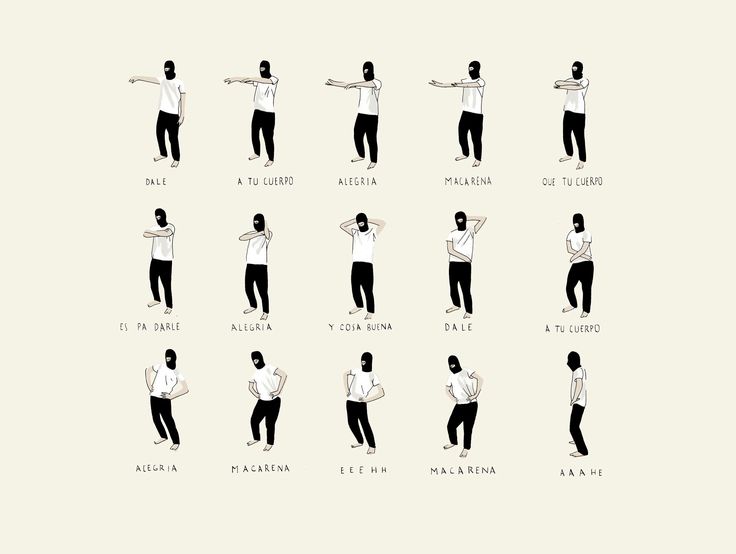 Three human dances (first, second and third) and two each for hobbits, dwarves and elves. And then there is the jig, which is studied in the Tavern League. All dances except the third human dance and jig can be learned from NPC dance masters, and how to get the last two is described a little lower under the heading “special dances”. nine0005
Three human dances (first, second and third) and two each for hobbits, dwarves and elves. And then there is the jig, which is studied in the Tavern League. All dances except the third human dance and jig can be learned from NPC dance masters, and how to get the last two is described a little lower under the heading “special dances”. nine0005
Who can teach dance?
In order to learn how to dance, you need to contact one of the dance teachers - dance masters.
You can find them in minor locations (Shir, Bree, Ered Luin), in places where festivals are held:
- Galmi will teach you the dances of the dwarves in the tavern of Thorin's Halls in Ered Luin. The Halls of Thorin (13.48s, 103.2w) can be reached by fast horse from Bree, Zanore, or Kelondim. There are two ways to get into the tavern itself: either go through the central hall and, turning left, go down the stairs and further along a long underground corridor, or you can shorten the path - to the left of the main entrance to the Halls, near the mailbox, there is a small door leading to Beer hall, and from there, through another door, you will be taken directly to the tavern.
 Galmi stands at the beer counter, but you'd better show your dancing skills on a large carpet. nine0031
Galmi stands at the beer counter, but you'd better show your dancing skills on a large carpet. nine0031 - Elven dance taught by Nadrien in Duillond (24.6s, 93.1w), also in Ered Luin. You can get there like this: on a fast horse from the West Gate of Bree, from the Halls of Thorin or Zanorje to Kelondim, then a horse from Kelondim to Duillond. The dancemaster is waiting for you in a large stone gazebo - you will find it by going down the slope east of the stables.
- You can learn how to dance people from Ada Woods (24.7s, 51.6w) by the pool in the Holiday Meadow. You can get from Bree West Gate by horse riding to Hengsteiser Farm. Driving or running from the farm to the south, you will reach the Festive Glade. nine0031
- Hobbit dancemaster Auger Barsuks nestled in the shade under the Celebration Tree (29.8s, 71.5w) in Hobbiton. You can get there by riding from the West Gate of Bree, Kelondim or Thorin's Halls on a fast horse to Zanora, where you need to change horses to Hobbiton.
 From Hobbiton, walk north to the big Holiday Tree - it's so conspicuous that it's hard to get lost.
From Hobbiton, walk north to the big Holiday Tree - it's so conspicuous that it's hard to get lost.
How can I get an assignment for dance lessons?
If, approaching the dance master, you don't see a ring above his head, inviting you to take the task, don't be alarmed. Dancing is a tiring business, so dance masters gather groups for training once every 20 minutes. Just stand next to him and wait until he announces "The dance will start in a few minutes!". Now you can take the task, but look, do not go far - 5 minutes after this announcement, the dance will begin. However, if you gape and did not have time to start - do not be discouraged, after 20 minutes you can try your hand again. Having learned one dance, you will be able to master the second only the next day (the task, like many other daily ones, is updated late at night). Thus, it will take you 8 days to learn 8 dances, so do not delay the process - the festival days fly by quickly. nine0005
What is training?
In the process of learning, you will have to repeat the movements that the dance master performs and announces. He will announce the numbers of the figures, and you need to fulfill them. The easiest way to do this is by clicking on this icon that appears on the task bar next to the task name:
He will announce the numbers of the figures, and you need to fulfill them. The easiest way to do this is by clicking on this icon that appears on the task bar next to the task name:
Dancemaster must be hit on the target, otherwise the emote will not be counted and you will fail the task. When completing the task, stay close to the dance master. nine0027 If you have completed the necessary steps correctly, you will see the inscription: "Pas completed."
Well, if something went wrong, don't be upset - in 20 minutes you will be able to join the next group of students.
How do I get a reward?
After you have correctly repeated all the movements after the dance master, the task is considered completed. Now you must turn to the dance master, who will offer you to learn one of the dances (if the dance master is a dwarf - one of the two dwarves, an elf - elven, and so on). You can learn only one dance at a time, to get the second one you will have to go through the training again. Don't mix up or take the same dance twice - check to see if it has been learned before. nine0027 After you select a quest reward, the following message will appear in chat:
Don't mix up or take the same dance twice - check to see if it has been learned before. nine0027 After you select a quest reward, the following message will appear in chat:
Passive skill learned: Emote: Dwarven Dance.
You have a new emote. This emote allows you to dance like a dwarf. It can be called with the command '/dance_dwarf' .
Congratulations! You have learned the dance. It immediately appeared in your list of emotions. Dance and have fun!
Special Dances
In addition to the normal dances, there are two special dances that dance masters do not teach. One of them - a jig - can be bought in the Tavern League. To do this, however, it is necessary to have a reputation as a kinsman there - not an easy task. However, one of your friends can give you a gift, because the training scroll is transferred without any problems. nine0027 But to get the third dance of people - you have to try yourself, and a lot. An envelope with this emotion is kept by one of the Algrag merchants (66. 5s, 17.2w) in Lhanukh, in Enedwait. The merchant will only talk to you if you have already gained Algrag Kin reputation, and will demand 5 gold and 5 silver tokens of Enedwaith in payment. Once received, it will be impossible to convey the emotion.
5s, 17.2w) in Lhanukh, in Enedwait. The merchant will only talk to you if you have already gained Algrag Kin reputation, and will demand 5 gold and 5 silver tokens of Enedwaith in payment. Once received, it will be impossible to convey the emotion.
How to have fun in the Middle Ages • Arzamas
You have Javascript disabled. Please change your browser settings. nine0005
CourseCrime and Punishment in the Middle AgesLecturesMaterialsGaze at strange animals, fight with sausages, drink from a wine fountain, attack a knight with a rake, play "Saint Cosmas", visit a "glorious house", gossip at the fountain and other ways to have fun available city dwellers in the Middle Ages
Prepared by Anna Puzyreva
Fifty-two ordinary Sundays, a week each to celebrate the main Christian holidays - Easter, Christmas and Pentecost, other obligatory holidays - Epiphany, Baptism, Candlemas, Palm Sunday, Ascension, Trinity, the feast of the Body and Blood of Christ, Day Sacred Heart of Jesus, Transfiguration, Exaltation of the Cross, Day of the Holy Family, Day of the Immaculate Conception, St. Joseph's Day, Day of the Holy Apostles Peter and Paul, Assumption of the Virgin Mary, All Saints' Day, plus the days of various saints - the patrons of the city, craft shops and so on, the days of their commemoration and the days of various events associated with them, as well as the entry of rulers, bishops and other important people - in total, about a third of the year was spent by a medieval city dweller in idleness. How could this time be killed? nine0005
Joseph's Day, Day of the Holy Apostles Peter and Paul, Assumption of the Virgin Mary, All Saints' Day, plus the days of various saints - the patrons of the city, craft shops and so on, the days of their commemoration and the days of various events associated with them, as well as the entry of rulers, bishops and other important people - in total, about a third of the year was spent by a medieval city dweller in idleness. How could this time be killed? nine0005
Go to church and listen to the preacher Miniature by Jean Fouquet from Etienne Chevalier's Book of Hours. XV century © Wikimedia Commons
Festive services were performed with great pomp with the participation of the best choral singers. Already from the 9th-10th centuries, the festive mass becomes like an allegorical performance due to the dramatization of the Old Testament, Gospel or hagiographic history. Such performances existed until about the 13th century, when urban theatrical performances took their place. nine0005
nine0005
On the holiday, women tried to dress up: they went not only to worship, but also "to people" - to look at others and show themselves. Everyone in the church had his own place, which was determined by his position in society. It was forbidden to work on Sundays and public holidays, and after the Mass, the parishioners wanted to have fun: dancing and singing often took place right in the churchyard, although the clergy at least declaratively condemned such a pastime.
Sometimes a preacher would visit the city, and then, if he did not speak in the courtyard of the temple, the burghers built a platform for him, where the guest could pray together with those present, and then deliver an incriminating sermon. nine0005
View performance
Dance of "wild people". Miniature from the "Chronicles" by Jean Froissart. 1470-1472 © British Library Medieval theatrical performances were mainly responsible for the spiritual entertainment of the townspeople and explained the Holy Scripture in one form or another in the popular language.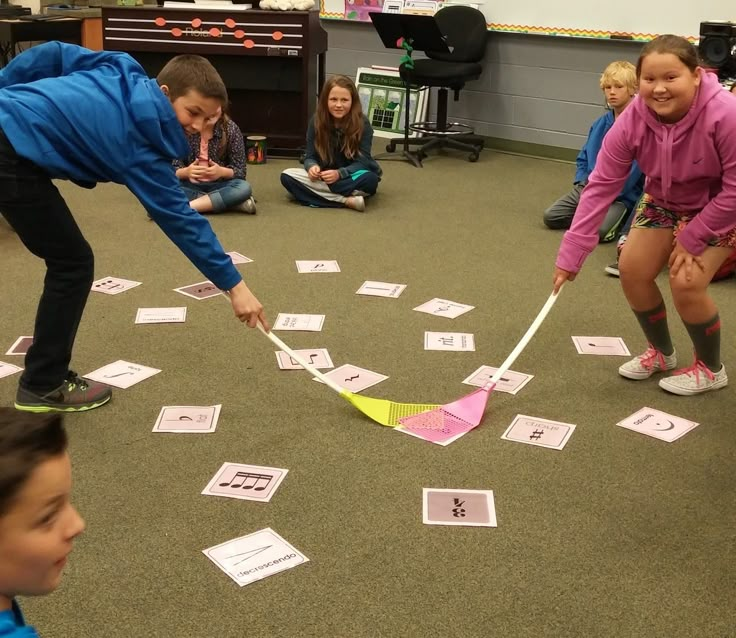 The basis of the Miracle was the apocryphal gospels, hagiography, and chivalric novels. In England, miracles were usually placed by members of craft workshops in honor of their patrons. In France, they were popular among the members of the puy - urban associations for joint pious activities, music and poetry competitions. The plot of the mystery, as a rule, was the passion of Christ, the expectation of the Savior, the lives of the saints. Initially, the mysteries were part of the church service, then they began to be played in the courtyard or in the cemetery of the church, and later moved to city squares. At the same time, they were played not by professional actors, but by clerics and members of the puy. nine0005
The basis of the Miracle was the apocryphal gospels, hagiography, and chivalric novels. In England, miracles were usually placed by members of craft workshops in honor of their patrons. In France, they were popular among the members of the puy - urban associations for joint pious activities, music and poetry competitions. The plot of the mystery, as a rule, was the passion of Christ, the expectation of the Savior, the lives of the saints. Initially, the mysteries were part of the church service, then they began to be played in the courtyard or in the cemetery of the church, and later moved to city squares. At the same time, they were played not by professional actors, but by clerics and members of the puy. nine0005
Morality is a cross between religious and comic theater. In allegorical form, they showed the struggle between good and evil in the world and in man. The outcome of this struggle was the salvation or death of the soul.
The performances were announced in advance, posters were hung on the city gates, and during the performance the city was carefully guarded, “so that no unknown people enter the said city on this day,” as it is written in one of the documents of 1390, stored in the archive of the city hall in Toure. nine0005
nine0005
For all the conventions of the productions, what was happening on the stage for the audience completely merged with reality, and tragic events coexisted with comic scenes. Spectators were often included in the action as participants in the events.
It was possible to have fun without moralizing. For example, to stare at wandering artists. Since about the 14th century, troupes of professional actors have been formed in France - the "Brotherhood of Passions", "Carefree Boys" and the like. Itinerant actors - histrions, shpielmans, jugglers - tried to surprise and amuse the audience with all sorts of tricks. "Troubadour Giro de Calancon's Teaching to the Juggler" (he lived at the beginning of the 13th century) contains a whole list of skills necessary for an actor:
“…[He] must play various instruments; twirl balls on two knives, throwing them from one point to another; show puppets; jump through four rings; get yourself an attached red beard and a matching suit to dress up and scare fools; teach the dog to stand on its hind legs; know the art of the leader of the monkeys; excite the laughter of the audience with a comical depiction of human weaknesses; run and jump along a rope stretched from one tower to another, watching that it does not succumb .
.. "
Listen to music or poetry
Miniature from the "History" by Guiron le Courtois. 1380-1390 © Bibliothèque nationale de FranceInstrumental music was predominantly the occupation of jugglers and minstrels, singing, dancing and performing to the sound of their instruments. In addition to various wind instruments (trumpets, horns, pipes, Pan flutes, bagpipes), over time, the harp and bowed varieties, the ancestors of the future violin, also entered the musical life: crotta, rebab, viela, or fidel. nine0005
Moving from place to place, jugglers performed at festivities at courts, at castles, and in city squares. Despite persecution by the church, jugglers and minstrels managed to get the opportunity to participate in spiritual performances in the 12th-13th centuries.
In the south of France, lyric poets were called troubadours, in the north they were called trouvères, in Germany they were called minnesingers. The lyrics of the minnesingers were the property of the nobility, and were greatly influenced by chivalric poetry and the love songs of the troubadours. Later, the art of versification in German cities was adopted by the Meistersingers, for whom poetry turned into a special science. nine0005
The lyrics of the minnesingers were the property of the nobility, and were greatly influenced by chivalric poetry and the love songs of the troubadours. Later, the art of versification in German cities was adopted by the Meistersingers, for whom poetry turned into a special science. nine0005
Like the artisans, the city-dweller poets constituted entire societies, similar to workshops. In Ypres, Antwerp, Brussels, Ghent and Bruges, festivals were held for the workshop of the so-called rhetoricians - artisans and merchants who took care of poetry. Each workshop had its own coat of arms and motto in the form of a charade, as well as a special hierarchical structure: dean, standard-bearer, jester and other members of the “bureau of elders”. The city authorities financed competitions of rhetoricians in the field of poetry and acting, as a result of which several prizes were awarded: for literary success, for the best replica of a jester, for the richest costume, for the most luxurious entrance to the city. nine0005
nine0005
dance
Spirit of love. Miniature from the Romance of the Rose. 1420s-30s © Wikimedia CommonsDancing is a favorite entertainment of all strata of medieval society, not a single holiday was complete without dancing. Jugglers complicated the technique by adding acrobatic elements, but the townspeople liked to move themselves, and not just look at the professionals. The church was usually against such entertainment, and the city government did not at all times have a good attitude towards dancing. However, later the authorities began to give permission for dancing in the halls of city halls, and from the end of the 14th century, so-called dance houses began to appear. Usually the dance house was next to or opposite the town hall and the church. Loud music and laughter disturbed the pious mood of the parishioners and servants of the temple, causing their discontent and endless complaints. nine0005
In the Bavarian Nordlingen, the dance house was located in a three-storey building.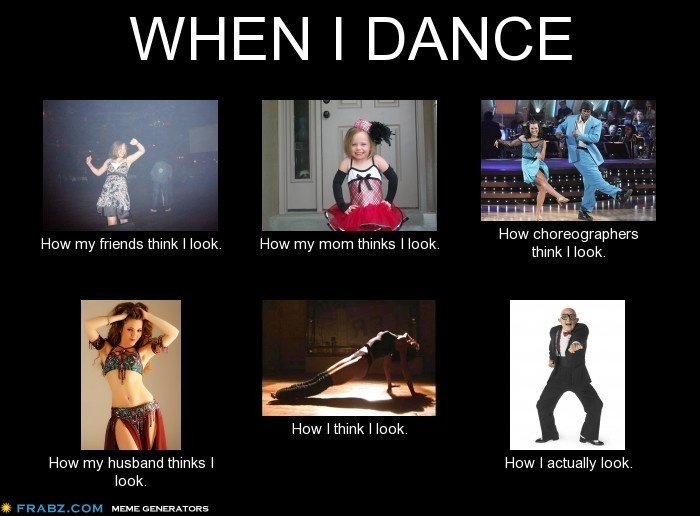 During the fairs, the ground floor was connected by walkways to nearby butcher shops and a pub, and visitors could shuttle between the establishments. Where dancing houses occupied several floors, the halls of the upper floor were usually reserved for burghers of noble birth, while the lower ones were at the disposal of ordinary citizens. In some cities, in such a house, among other things, there was a hotel, and in Munich and Regensburg, prisoners were even kept in the basement of the city "dancing house". nine0005
During the fairs, the ground floor was connected by walkways to nearby butcher shops and a pub, and visitors could shuttle between the establishments. Where dancing houses occupied several floors, the halls of the upper floor were usually reserved for burghers of noble birth, while the lower ones were at the disposal of ordinary citizens. In some cities, in such a house, among other things, there was a hotel, and in Munich and Regensburg, prisoners were even kept in the basement of the city "dancing house". nine0005
In addition, there were dance houses intended exclusively for ordinary citizens: a roof was built on four pillars over a wooden deck, slightly raised above the ground. There were musicians on them, and men and women danced around in a circle. If the nobility preferred measured and ceremonial dances-processions, and dances with hoops, swords and other objects symbolizing handicraft production dominated the guild holidays, then improvisational dances and round dances were common among the urban people, which the church called rude and shameless. nine0005
nine0005
Go to the fair
Fair. Miniature to Aristotle's Politics. XV century © Bibliothèque nationale de FranceSmall city markets were at the service of the townspeople every week, but fairs were held quite rarely - once or several times a year: on Christmas, Easter or on the day of the local saint - the patron saint of the city or the patrons of trade and craft workshops.
For example, the fair in Saint-Denis near the walls of Paris took place once a year, but it lasted a whole month. During this time, all trade in Paris ceased and moved to Saint-Denis. Residents sought to go there not only for shopping, but also to stare at outlandish things from distant lands, at the performances of jugglers, acrobats and trained bears, to listen to stories told by merchants who had visited overseas countries. The spectacle was so popular that Charlemagne gave his stewards special instructions to "see that our people do the work they are required to do by law, and not waste time hanging out in the markets and fairs. " nine0005
" nine0005
Fairs attracted a lot of rabble, so they often had fights and riots. That is why for a long time they were allowed to be held only in cities where there was a bishop or ruler who could maintain order and resolve disputes that arose between the fair participants. In medieval England, there were even special courts with a simplified judicial procedure, which ensured the speedy resolution of cases. They were called "courts of dusty feet" (court of piepowder, pie poudre or pepowder) - in 1471 the English Parliament decided that all persons associated with fairs have the right to claim for themselves just such a court. nine0005
Participate in the carnival
Carnival is inseparable from fasting: it was the last multi-day celebration that preceded a long period of abstinence, and it was accompanied by feasts, masquerades, processions and amusing fights on cheeses and sausages. Carnival is the realm of gluttony, chaos and the glorification of everything bodily.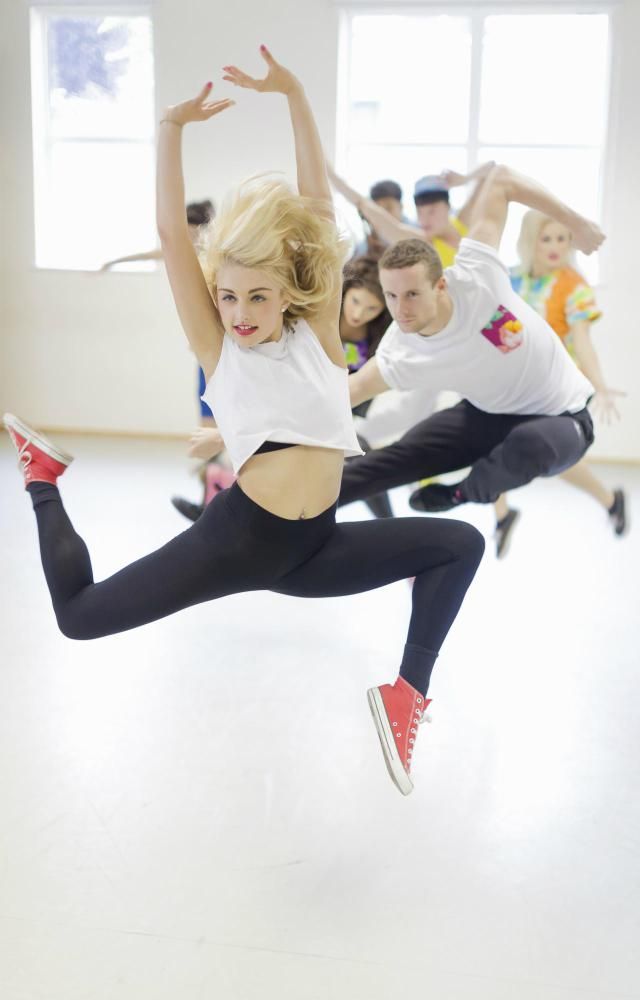 Masks and mummers, half-beasts-half-people and kings of jesters, the ship of fools and the election of a donkey pope - all church and secular rituals were translated into the language of buffoonery, and symbols of power were subjected to public ridicule. The entire church service and sacred texts were turned inside out. The main events of the carnival took place in the church, although since the 13th century, these obscenities were tried to be banned by official interdicts. nine0005
Masks and mummers, half-beasts-half-people and kings of jesters, the ship of fools and the election of a donkey pope - all church and secular rituals were translated into the language of buffoonery, and symbols of power were subjected to public ridicule. The entire church service and sacred texts were turned inside out. The main events of the carnival took place in the church, although since the 13th century, these obscenities were tried to be banned by official interdicts. nine0005
In the message of the theological faculty in Paris, sent to the bishops of France in 1445, the carnival is described very colorfully:
“Priests and clerics can be seen wearing masks and monstrous masks during the service. They dance in the choir, disguised as women, pimps and minstrels. They sing obscene songs. They eat sausages in the corners of the altar while the priest serves mass. They also play dice there. They incense with stinking smoke coming from the soles of old shoes.
They jump, run around the church, not shy. And then they drive around the city in dirty wagons and carts, causing the laughter of their companions and associates, making obscene gestures and uttering shameful and dirty words. nine0005
During the carnival, everything that was forbidden on ordinary days was allowed, the hierarchy was violated, the usual norms turned over - but as soon as the holiday ended, life returned to normal.
Greet a guest or ruler
Miniature from a German chronicle. 1383 © Württembergische Landesbibliothek Solemn entries of emperors, kings, princes, legates and other gentlemen into the cities subject to them have always been burdened with a multi-level symbolic meaning: they reminded of the nature of power, celebrated victory, asserted political dominion over remote territories. They happened quite often: in the Middle Ages and even in modern times, the royal courts were nomadic - in order to retain power, the kings had to constantly move from place to place. nine0005
nine0005
The ceremony consisted of several acts, each of which was strictly regulated. It all started with a greeting from the ruler, often far beyond the city; then followed the reception of the crowned person at the city walls, the transfer of keys, the opening of the city gates, the deputations of the nobility and the clergy. From the gate, the cortege moved along the main streets of the city, which were sprinkled with fresh flowers and green branches. Finally, bulls and game were roasted in the central city square and barrels of wine were rolled out for all the inhabitants of the city. At 1490 year in Vienne, during the entry of Charles VIII, a fountain of good and evil was installed, which on one side beat with red wine, and on the other with white. Such treats were intended to embody the image of a fabulous country of abundance, which the sovereign had to reveal to his subjects at least once.
They staged dramatizations for the guest. In 1453, a whole performance was staged in Reggio: the patron saint of the city, Saint Prospero, soared in the air with many angels who asked him for the keys to the city, so that later they would be handed over to the duke under hymns in his honor. When the procession reached the main square, Saint Peter flew down from the church and put a wreath on the duke's head. nine0005
When the procession reached the main square, Saint Peter flew down from the church and put a wreath on the duke's head. nine0005
In the German lands, the sovereign often entered the city surrounded by criminals sentenced to exile, and they moved not just in a retinue, but held on to the edge of the patron’s clothes, harness, saddle or stirrup of his horse - in this way, they could return to the city. So, in 1442, King Frederick III ordered to take 11 people with him to Zurich, and in 1473 to Basel - 37. True, the city authorities could expel the criminal again as soon as the ruler left the city.
nine0086 View jousting Miniature from the Zurich songbook "Manes Code". XIV century © Wikimedia Commons The tournament was a real celebration of the demonstration of military prowess and knightly honor. Everyone wanted, if not to take part in it, then at least to see how the noble youth obtains glory and prey for themselves.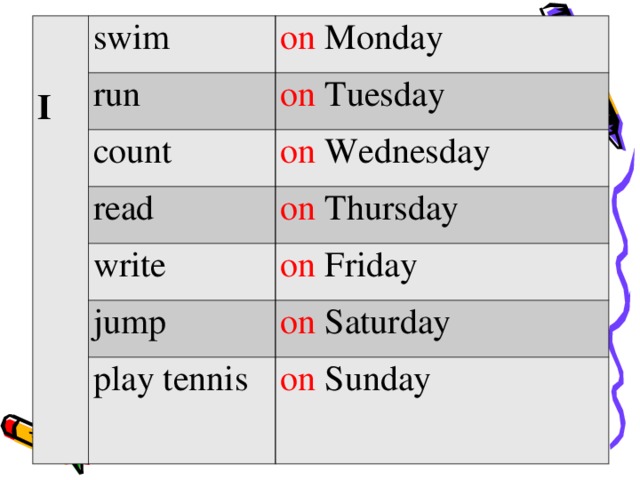 Initially, the whole action resembled a mixture of a fair and a real battle: the participants converged wall to wall, some were seriously injured or even died, and a motley crowd gathered around, which, in addition to knights, their squires, foot soldiers and servants, also consisted of blacksmiths, sellers, changed and onlookers. nine0005
Initially, the whole action resembled a mixture of a fair and a real battle: the participants converged wall to wall, some were seriously injured or even died, and a motley crowd gathered around, which, in addition to knights, their squires, foot soldiers and servants, also consisted of blacksmiths, sellers, changed and onlookers. nine0005
Under the influence of chivalric novels, the tournaments gradually became more organized, the participants began to use special weapons, the knights met for a one-on-one duel, and the lists were surrounded by a fence. Stands were built for spectators, and each of them had its own "queen", and women traditionally handed the prize to the best tournament fighter. In 1364, Francesco Petrarca describes the atmosphere that prevailed during the Venetian giostra (from the Italian word giostre - "duel"):
“There is no free place below… the vast square, the [St. streets, adds to the fun."
Tournaments eventually became a costly and sophisticated court sport that accompanied various kinds of festivities on the occasion of the wedding of the ruler, coronation, peace or alliance - along with festive masses, processions, dinners and balls, for the most part not intended for ordinary citizens. nine0005
nine0005
The townspeople responded to this with a parody "knight's tournament" (often held during the big carnival on Maslenitsa), in which the entire knightly ritual was turned upside down. A man who imitated a knight went to a duel with a helmet-basket on his head, sitting on an old horse or barrel, and threatened the enemy with a rake or something from kitchen utensils instead of a spear. After the end of the event, everyone immediately went to celebrate it with a fun feast.
nine0086 Take part in sports The burghers had every opportunity to practice and compete in the possession of real weapons. Archery societies and fencing schools were organized for training, which existed in Flemish, northern Italian, English, French and German cities, as well as in Krakow, Kyiv and Novgorod. Associations of archers and swordsmen had their charters and resembled workshops. Preparation was carried out in different directions, but for competitions in each city they chose a certain type of martial arts. For example, in Spanish cities, preference was given to fights with the use of cold weapons and equestrian bullfighting, in southern England and Novgorod - fisticuffs, in German and Flemish cities - fencing and wrestling. nine0005
For example, in Spanish cities, preference was given to fights with the use of cold weapons and equestrian bullfighting, in southern England and Novgorod - fisticuffs, in German and Flemish cities - fencing and wrestling. nine0005
In Italy, the games and competitions of the inhabitants of the city-republics resembled exercises. In Pavia, for example, the townspeople were divided into two groups, they were given wooden weapons, and protective helmets were put on their heads. Prizes were awarded to the winners. In the river towns, fights could be held for the symbolic capture of the bridge. The image of a seething crowd fighting on such a bridge is a favorite plot of engravings of that era: in the foreground, gondoliers pick up those who have fallen into the water, and numerous fans crowd in the windows and on the roofs of the surrounding houses. nine0005
In England, a popular form of recreation for boys was playing ball. Everyone took part, and there were almost no rules. A ball stuffed with bran or straw could be kicked and driven, rolled and carried in the hands. The goal of the competition was to deliver the ball over a certain line. In cities, such crowded fights were fraught with great dangers, and it is no coincidence that restrictions were introduced quite early in London, Nuremberg, Paris and other places, with the help of which the authorities sought to moderate the ardor of the players. nine0005
A ball stuffed with bran or straw could be kicked and driven, rolled and carried in the hands. The goal of the competition was to deliver the ball over a certain line. In cities, such crowded fights were fraught with great dangers, and it is no coincidence that restrictions were introduced quite early in London, Nuremberg, Paris and other places, with the help of which the authorities sought to moderate the ardor of the players. nine0005
Play
Miniature from a treatise by Alfonso the Wise. 1283 © Real Academia de la HistoriaFor those who did not like street fun, there was home entertainment. For example, blind man's buff and "Frog in the middle." The rules of the last game are as follows: a person sat in the center, and the rest teased and beat him. The task was to catch one of the players without leaving the circle, and then he became a "frog".
nine0002 There were also quiet games: according to the rules of some, it was necessary to answer the question of the presenters without concealment, others - to tell a story. In addition, they played “Saint Cosmas”: one of the participants took on the role of a saint, while the others knelt in front of him in turn. The host had to make the kneeling player laugh in any way, and then he would perform some task.
In addition, they played “Saint Cosmas”: one of the participants took on the role of a saint, while the others knelt in front of him in turn. The host had to make the kneeling player laugh in any way, and then he would perform some task. Already in the Middle Ages, checkers, chess, dice and even cards were popular. Chess was the pastime of the nobility, and chessboards made of wood or metal were considered a luxury item and were often a real work of art. nine0005
The rules for playing cards were different: for example, one of the participants took out a card from the deck, all those present bet money on it. If after that three or four cards of the same suit were taken out of the deck in a row, then the player who took out the first card received the entire amount bet on it.
But the most popular game was dice. Representatives of all social categories indulged in this game - in huts, castles, taverns and even monasteries - and lost money, clothes, horses and dwellings.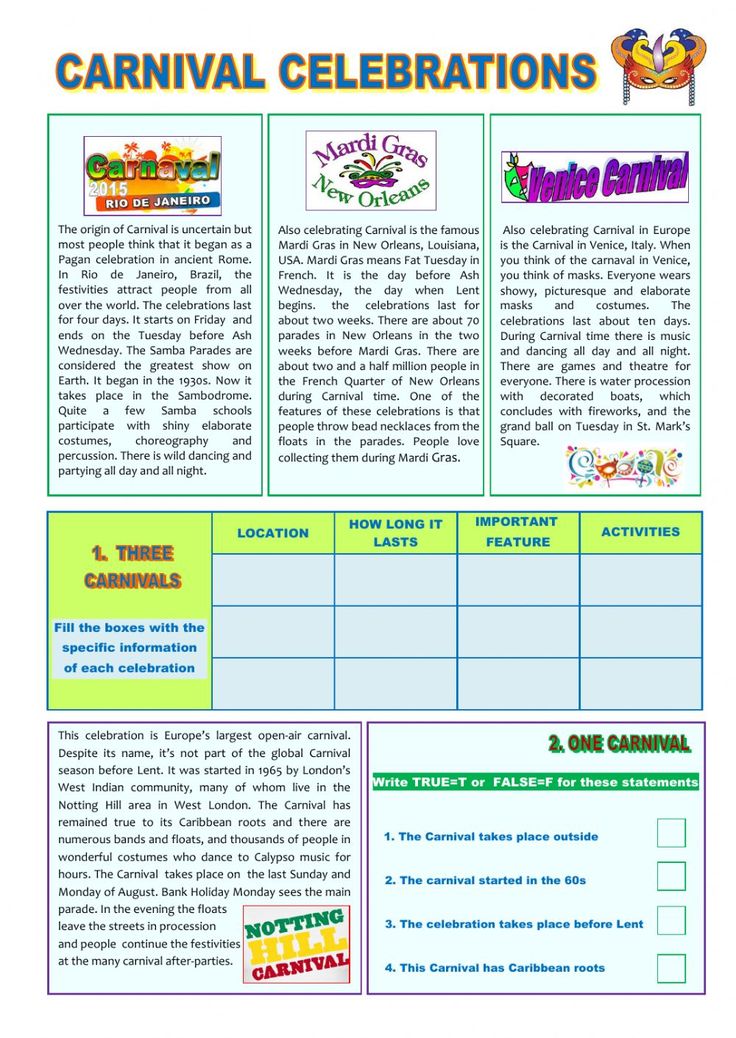 Many complained that they lost everything they owned in this game. In addition, there were often cases of fraud, especially because of fake bones: some had a magnetized surface, others had the same facet twice, and others had one side made heavier due to the admixture of lead. As a result, numerous feuds arose, sometimes even developing into private wars. nine0005
Many complained that they lost everything they owned in this game. In addition, there were often cases of fraud, especially because of fake bones: some had a magnetized surface, others had the same facet twice, and others had one side made heavier due to the admixture of lead. As a result, numerous feuds arose, sometimes even developing into private wars. nine0005
Go to the bathhouse and have a good drink
In most medieval cities there were city baths. In Paris at the end of the 13th century there were 26 baths, half a century later in Nuremberg - 12, in Erfurt - 10, in Vienna - 29, in Wroclaw - 12. secular communication. After bathing, visitors participated in receptions and dinners, played ball, chess, dice, drank and danced. nine0005
In German cities, wine merchants rolled out wine barrels into the streets to the bathhouses, arranged stools around, took out mugs and gave everyone who wanted to taste the wine. A drinking bout was immediately formed in the street, so that the city councils were forced to ban this custom. An exception was made only for a few days a year, for example, St. Martin's Day, when it was customary to open young wine. But on the other hand, these days people stood, sat and lay in the streets - and drank wine.
An exception was made only for a few days a year, for example, St. Martin's Day, when it was customary to open young wine. But on the other hand, these days people stood, sat and lay in the streets - and drank wine.
In general, prostitution, although condemned by the church, was considered an inevitable phenomenon. "Houses for women" or "glorious houses" belonged to noble families, merchants, royal officials, and even bishops and abbots, and the most prestigious of them were often located near the magistrate or courthouse. In the High Middle Ages, visiting a brothel by unmarried men was not considered shameful - it was seen as a sign of health and well-being. nine0005
Relax at the city fountain
Jean de Courcy dreams of nature, sleeping by the fountain. Miniature from the poem "The Path of Valor". XV century © British Library
Miniature from the poem "The Path of Valor". XV century © British Library Not all townspeople could afford to have a separate garden or pond built behind the house: many lived in rented rooms, closets and annexes. Water for the household was taken from a public well or fountain located in the square, usually not far from the church. In the Late Middle Ages, such fountains served not only as a decoration and a source of drinking water, but also as a meeting place and walks for citizens. nine0005
View execution
Miniature from the "Chronicles" by Jean Froissart. Not later than 1483 © British Library The place of execution could be located in front of the city, on the other side of the moat, it could be on the square or even in front of the victim's house, but the execution was invariably a public event. The place and time of the execution, as well as the path of the criminal, were known in advance to all the townspeople. The spectators were called by heralds. The optimal time was considered to be noon, often the authorities arranged executions on the market day in order to achieve the maximum confluence of people, although not on religious holidays. nine0005
The spectators were called by heralds. The optimal time was considered to be noon, often the authorities arranged executions on the market day in order to achieve the maximum confluence of people, although not on religious holidays. nine0005
The crowd gathered around the criminal gradually, as the procession moved through the city. The entire ritual of punishing the offender was designed for the audience, the slow theatrical performance assumed the participation of others in the ceremony. In some cases, the criminal was given the right to a duel with the executioner, and people could contribute to his release. This happened in Saint-Quentin in 1403, when during the struggle the executioner fell to the ground and a crowd of citizens demanded that the royal provost let the winner go. Spectators watched the exact execution of the ritual and could demand a retrial if something went wrong. nine0005
It was forbidden to bury the bodies of criminals in the cemetery, and their corpses remained on the gallows for many years until they completely decomposed, serving as an edification for the public walking around.
Sources
- Boytsov M. A. Greatness and humility. Essays on political symbolism in medieval Europe.
M., 2009.
- Viollet-le-Duc E. E. Life and entertainment in the Middle Ages.
M., 1997.
- Ivanov K. A. Medieval city and its inhabitants.
St. Petersburg, 1900.
- Krylova Yu. P. Games and entertainment of citizens.
City in the medieval civilization of Western Europe. T. 3. Man inside the city walls. Forms of public relations. M., 1999.
- Livanova T. N. The history of Western European music until 1789. T. 1.
M., 1983.
- Power E. People of the Middle Ages.
M., 2010. nine0005
- Petrushenko L. A. Daily life of medieval Europe.
M., 2012.
- Togoeva OI Execution in a medieval city: a spectacle and a judicial ritual.
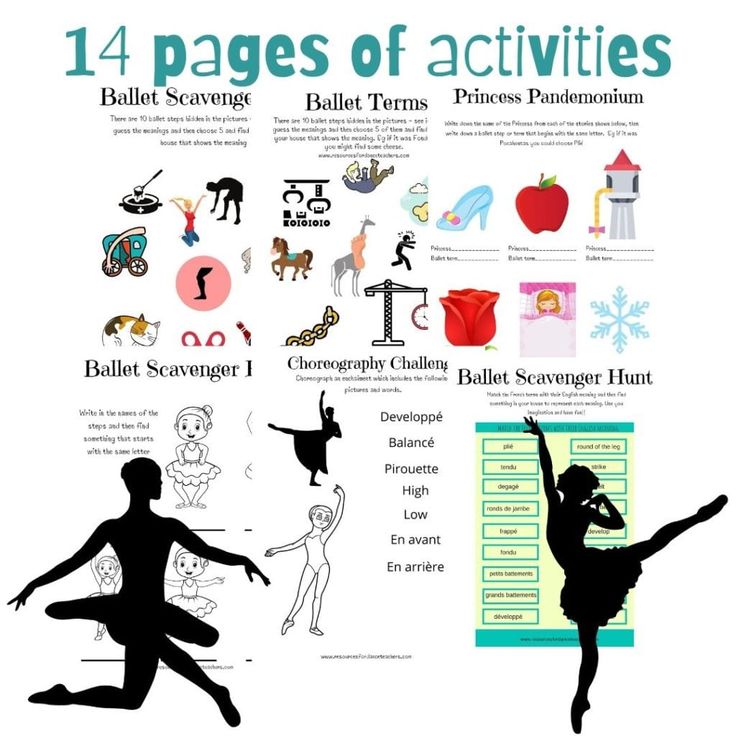
City in the medieval civilization of Western Europe. T. 3. Man inside the city walls. Forms of public relations. M., 1999.
- Fossier R. People of the Middle Ages.
M., 2010.
- Yastrebitskaya A. L. Medieval culture and the city in the new historical science. nine0002 M., 1995.
- Culture and art of the medieval city.
M., 1984.
- Dictionary of medieval culture.
M., 2007.
Tags
Guide
Entertainment
Middle Ages
Give your friends and family a subscription to Radio Arzamas and Goose Goose
Happy New Year! So that your loved ones can spend the next year with the Vikings and Tolkien, the Etruscans and the "Fulcrum", Kharms and primitive people, give them a subscription to our applications
Do you want to know everything?
Subscribe to our newsletter, you'll love it. We promise to write rarely and in the case of
courses
All courses
Special projects
9000 and how trial by fire and water differs from tortureReads by Olga Togoeva
What is the story of Gilles de Ré about, what is the “inquisitorial revolution” and how does trial by fire and water differ from torture
15 minutes
2/6
“Deadly answer” by Zhanna d'Ark
Why came up with the Inquisition, who were the first inquisitors and what Torquemade of
Reads Olga Toyeva
,Why inquisitors came up with who the first inquisitors were and what were the first inquisitions and what achieved Torquemada
12 minutes
3/6
Prison of the abbey of Saint Remigius
0005
Reading by Olga Togoeva
How medieval criminals were kept, when bars on the windows appeared in the Rouen prison, why miniatures are often tried under a tree and what the monks from Reims lacked
12 minutes
94/6
Ideal criminal Why the instruments of passions were depicted in courts, why the jailer and the executioner divided the property of criminals and how original sin is connected with judicial practice
Reads Olga Togoeva
practice
14 minutes
5/6
Execution of the regicide
For what they cut off hands, quartered and changed the surname of distant relatives, who had to carry a dog around the city, and who - the corpse of a hanged man and when the last public guillotining took place 9005 9005 Togoeva
For what they cut off hands, quartered and changed the surname of distant relatives, who had to carry a dog around the city, and who - the corpse of a hanged man, and when the last public guillotining took place
13 minutes
6/6
Shipment of Abelara
Castration, a walk on a donkey, salvation from a scaffold, dispute decisions and other judicial rights of townspeople
Reads Olga Toyeva
Castration, a walk on a dawn, rescue, decisions, decisions. disputes and other judicial rights of the townsfolk
disputes and other judicial rights of the townsfolk
Materials
History of the Western Middle Ages in 90 points
Interactive cheat sheet
What kind of heretic are you?
Interrogate the virtual inquisitor to find out what heresy you have fallen into
Attributes of justice
Where did Themis get the sword, scales and blindfold from
Olga Togoeva: “We are still chasing witches”
Who is a medieval person
Medievalist Oleg Voskoboinikov from modern
Guess the animal
How the authors of medieval bestiaries imagined the crocodile and ostrich
No one expects the Spanish Inquisition!
The story of a joke
Modern Inquisition
Vatican journalist Jacopopo Scaramuzzi - About the Congregation of the Doctrines of Vera
What is the “suffering Middle Ages”
Medievists analyze the famous public
Peter Abelary - the composer and the musician
hymns about joy and glory written at Eloioza.
How to have fun in the Middle Ages
Thirteen ways to organize leisure in a medieval city
What do you know about the Middle Ages and medieval courts
Check if you know Olga Togoeva's course well
What to read about a man of the Middle Ages
5 books that make sense to start studying anthropology of the Middle Ages
Was there a Renaissance?
David Kraszovets on why the word "Renaissance" is misleading
Rehabilitation of Bluebeard
How activists tried to justify Gilles de Ré at the end of the 20th century lyrics
How to find out a witch
Historian Olga Tomev about what to do by suspicious witness in England XVI or XVII century
Interrogation of Sulpols
The Englishman's testimony, who wore a women's dress and had random sexual intercourse
The testimony of the thief and the cattleman
Confession of Jeannin Le Voirrier and the verdict that the court handed down on him
Debate of the judges
How Pierre Payu was sentenced to the pillory, brand and explanatory tablet
The Appeal of the Sorcerer
Philip Calve, recognized by the sorcerer, accuses the judges of exceeding the powers of
The execution of the Jew and the miraculous salvation of
description of the “Jewish execution” from the diary of one Paduan
What was sent 650 years ago
Hanging, expulsion, extinguishing, repentance and life imprisonment "for the bread of sorrow and the water of repentance"
How the village of Montaillou became famous
Tenderness, passion and fate in a heretical village
A brief history of indulgence
How did the idea that sin can be redeemed with money
10 facts about Thomas Aquinas
The most important thing about the biography and inventions of the great scholastic
Villon in the 20th century
Villon read his poetic translation by Ilya Ehrenburg competitions in Blois”
Six victims of the medieval court
What methods of sentencing an opponent did the monarchs in medieval Europe resort to
What do we know about the Last Judgment
Anna Shmaina-Velikanova — about the last Judgment in biblical and apocryphal descriptions
A 17th century guide to Reims
Where in Reims one could find prisons, gambling houses, markets, cemeteries and vegetable gardens
Jacqueline Serciglini-Thule — about how a robber and an intellectual are combined in one poet
Punishment for edification
How the signs explaining what not to do looked like
Eloise's first letter
Why Eloise did not want to marry Abelard and what she accused him of after twenty years of separation
1117 in history
What was happening in the world while the drama of Abelard and Eloise was unfolding in Paris
The entire course in 5 minutes
Allabout medieval courts, inquisitors, defendants, prisons, executions, and their spectators
0002 History, literature, art in lectures, cheat sheets, games and expert answers: new knowledge every day
© Arzamas 2022.